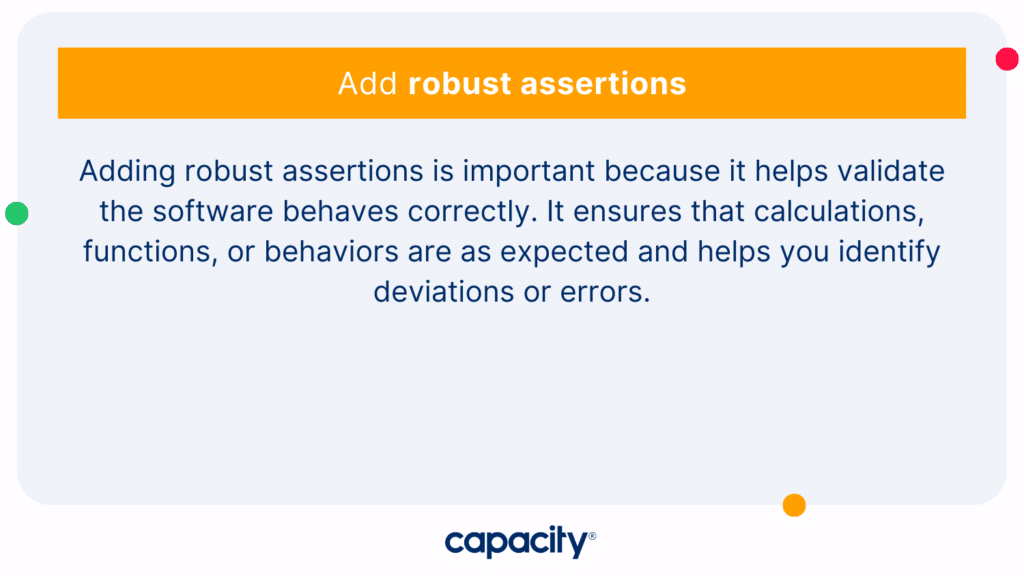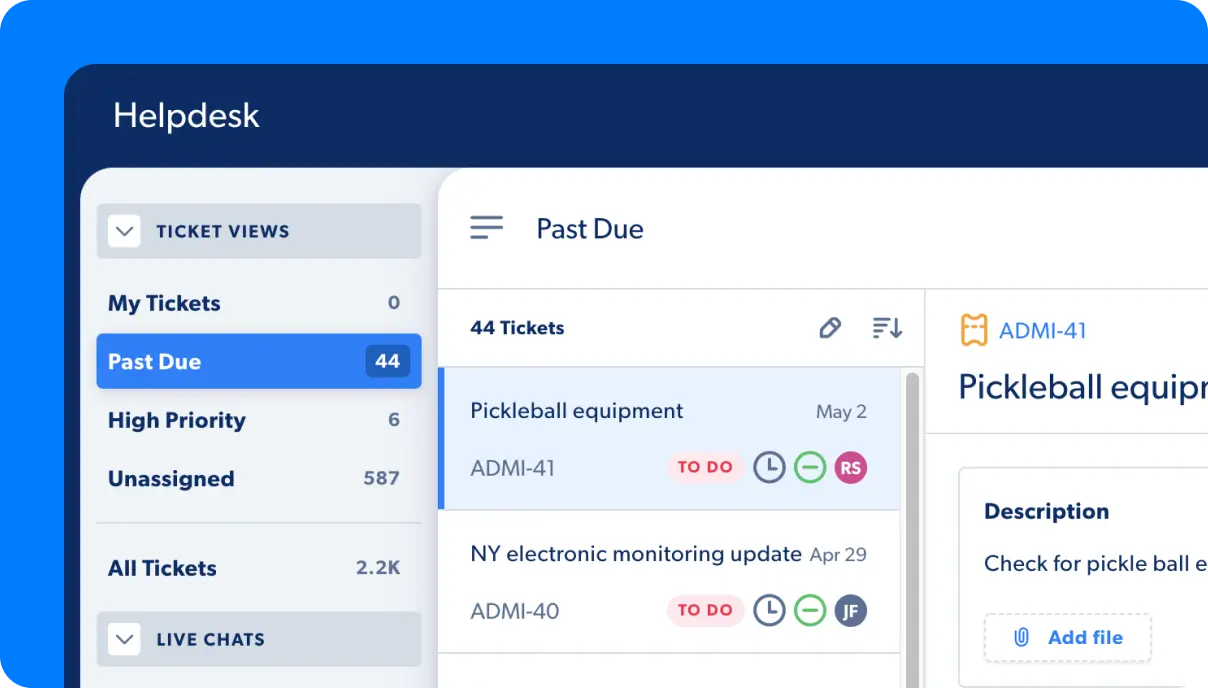Automation testing has become an indispensable practice for ensuring high-quality software products. It’s important because it saves time, increases test coverage, improves accuracy, detects issues early, and supports continuous integration and deployment. It’s like having a reliable assistant that helps you find and fix problems in your software, making it more robust and reliable for users. A study from Perfecto found that 35% of digital enterprises say manual testing is the most time-consuming activity in a test cycle.

Automate Your Work
Capacity’s enterprise AI chatbot can help:
- Answer FAQs anytime, anywhere
- Find relevant documents within seconds
- Give surveys and collect feedback
It is no longer limited to IT professionals alone; Quality Assurance (QA) teams are vital in driving efficient and effective automation testing processes. While QA professionals may have a more relaxed approach compared to their IT counterparts, they still value concise and informative content that provides specific answers to their research inquiries. Let’s explore seven essential tips to help QA teams like yours write effective automation tests that deliver better QA outcomes.
7 essential automation testing tips

Automation testing is key to faster feedback loops, increased test coverage, and overall software quality. To help QA teams maximize the benefits of automation testing, here are seven essential tips to guide them:
Tip 1: Understand the application under testing
When we say “Application Under Testing,” we’re referring to the specific software that you’ll focus on testing. It’s the thing we want to make sure works correctly and doesn’t have any problems.
To create effective automation tests, it is crucial to have a deep understanding of the application. Dive into its functionality, features, and intended user behavior. By gaining this comprehensive understanding, you can identify critical test scenarios and determine the scope of automation.
Picture you’re building a sandcastle on the beach. Before inviting others to admire your sandcastle, you want to ensure it’s sturdy and won’t collapse when people touch it. In this scenario, your sandcastle is the “Application Under Testing.” You want to test it to ensure it’s in good shape.
Tip 2: Define and document your test objectives
Before writing automation tests, clearly define and document your test objectives. We’re discussing setting clear goals and describing what you want to achieve with your testing. It’s like creating a roadmap or a plan for your testing process. By establishing these objectives upfront, you create a process that aligns your automation tests with the overall QA strategy. It also facilitates effective communication within the QA team and ensures everyone is on the same page.

Let’s say we’re testing a messaging app. Our test objectives might include checking if messages are delivered promptly, ensuring the app doesn’t crash when sending pictures, or verifying that notifications work correctly. Some 85% of Dev managers say it’s nearly impossible to deliver on innovation as fast as necessary without compromising quality and increasing the risk of bugs in production. But these objectives help us focus our testing efforts and ensure we cover all the important areas.
Tip 3: Design test cases for reusability
One of the key advantages of automation testing is the ability to reuse test cases, saving time and effort. Design your test cases with reusability in mind. We can use existing tests as building blocks and adapt them for different scenarios. Identify common functionalities or scenarios across multiple test cases and create reusable components or libraries. This approach not only streamlines test creation but also simplifies maintenance and ensures consistency in testing across different modules or features.
Think of it as having a collection of versatile tools you can use repeatedly for different tasks. It allows you to be more efficient in testing efforts and helps ensure thorough coverage without unnecessary duplication.
Tip 4: Use appropriate test data
Choosing appropriate test data is crucial for achieving comprehensive and meaningful automation testing. Select test data that covers different scenarios, boundary conditions, and edge cases. This ensures that your automation tests validate the application’s behavior under various circumstances, uncovering potential defects or vulnerabilities. Think of it as testing the application’s resilience against real-world challenges.
If you’re testing a registration form on a website, you must provide appropriate test data like valid email addresses, unique usernames, and passwords meeting the specified criteria. We can simulate real-world scenarios using realistic and appropriate test data and ensure the registration process works correctly. We can thoroughly test the software and identify any issues or unexpected behavior using various test data that cover different possibilities.
Tip 5: Add robust assertions

Assertions are vital in automation testing as they enable you to verify expected outcomes and detect deviations from the desired behavior. Incorporate robust assertions at appropriate points within your automation tests. These assertions validate the application’s responses, data integrity, and expected outputs, giving you confidence in the system’s correctness. Consider them as the quality checkpoints along the automation testing journey.
Adding robust assertions is important because it helps validate the software behaves correctly. It ensures that calculations, functions, or behaviors are as expected and helps you identify deviations or errors.
Think of it as having a reliable tool to check if everything is in place, just like pressing puzzle pieces to ensure they fit correctly. By adding robust assertions, we have confidence that our software functions properly and meets the requirements.
Tip 6: Incorporate exception handling
Unexpected scenarios and exceptions are bound to arise during test execution. To ensure robustness and stability, incorporate exception handling mechanisms into your automation tests. This includes capturing and logging relevant information, performing error recovery actions, and reporting failures accurately. It allows us to handle unexpected errors gracefully and prevents our programs from crashing or behaving unpredictably.
You contribute to the resilience and reliability of the tested application when exceptions are handled. It’s like having a backup plan or an alternative strategy in case something unexpected happens. Incorporating exception handling, we ensure that our software can handle unexpected errors and continue running smoothly.
Tip 7: Maintain your test documentation and reporting
Consistent documentation and reporting are vital components of effective automation testing. Maintain comprehensive test documentation that outlines each test case’s purpose, steps, and expected results. Additionally, generate detailed reports that provide insights into test execution, results, and any encountered issues. These records serve as valuable references for future testing efforts, enable knowledge sharing within the QA team, and help track the progress of your QA activities. Consider it as creating a knowledge repository that supports continuous improvement.
By implementing these seven essential tips, QA teams can elevate their automation testing efforts, leading to many significant benefits that positively impact the software development process and user experience. Using automation testing as a collaborative practice throughout the entire development lifecycle, you can proactively address potential challenges, enhance efficiency, and consistently deliver high-quality software products that meet and surpass user expectations.
This approach proves particularly crucial in the ever-evolving landscape of 2023 and beyond, where technology advancements shape user demands and market dynamics. By embracing automation testing as a fundamental pillar of their QA strategy, teams can establish themselves as pioneers in ensuring seamless and exceptional software quality that delights users and drives business success in an increasingly competitive industry.

Automate Your Work
Capacity’s enterprise AI chatbot can help:
- Answer FAQs anytime, anywhere
- Find relevant documents within seconds
- Give surveys and collect feedback














































